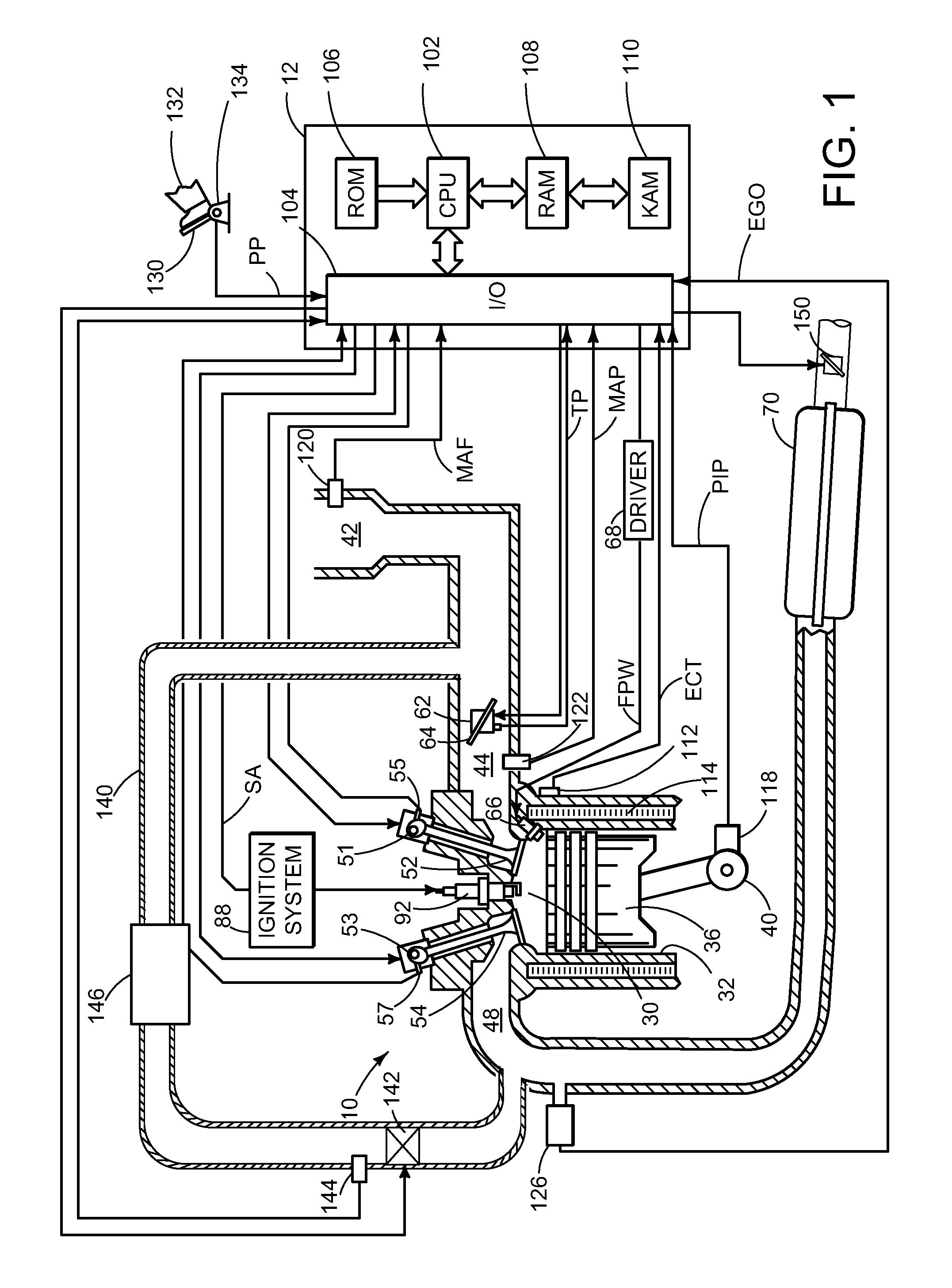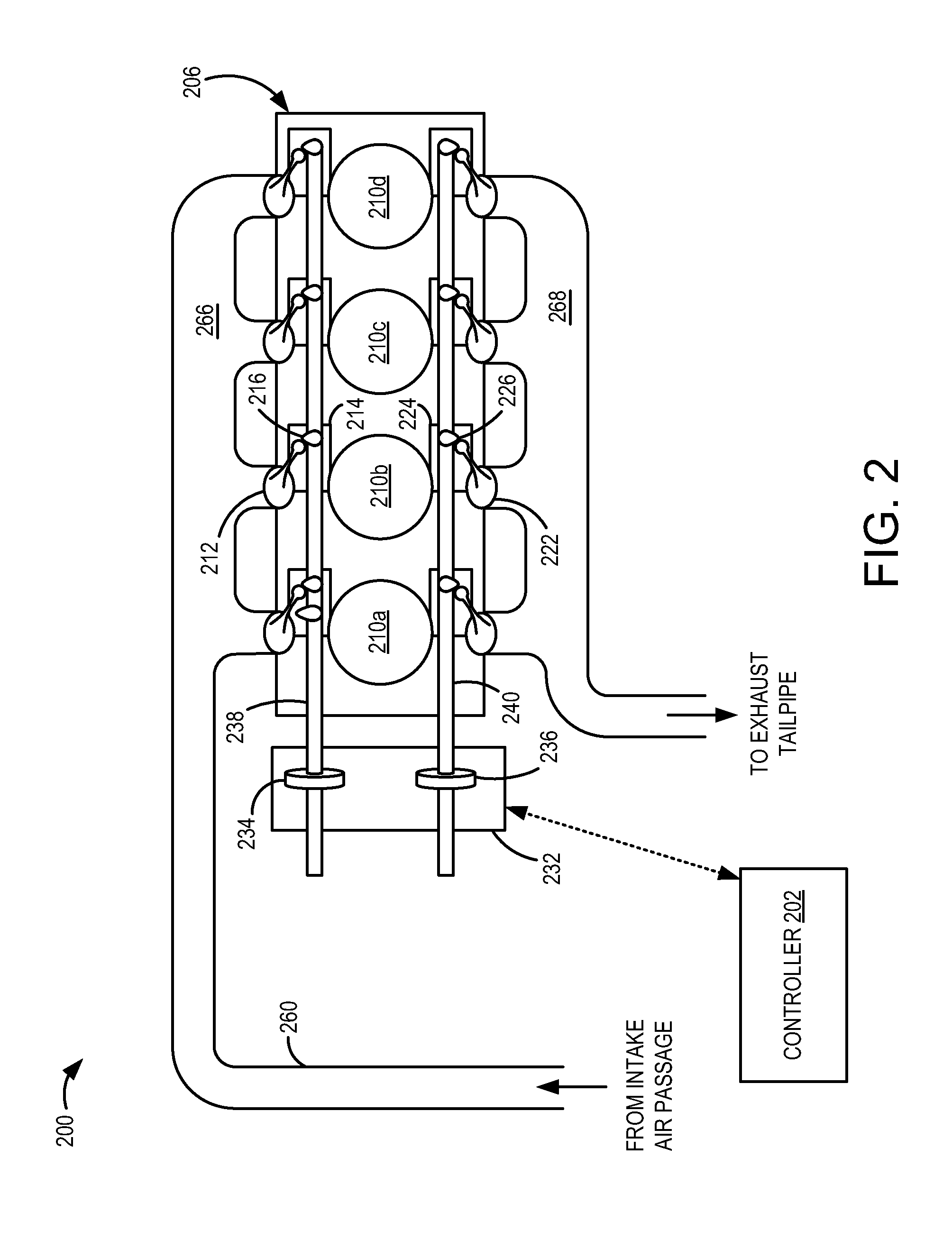Catalyst heating with exhaust back-pressure
a catalyst and back-pressure technology, applied in the direction of machines/engines, output power, electric control, etc., can solve the problems of limiting the temperature increase of exhaust, slipping emissions past the catalyst, unstable combustion, etc., to achieve the effect of reducing the temperature of exhaust gas traveling through the catalyst, and reducing the temperature of exhaust gas
- Summary
- Abstract
- Description
- Claims
- Application Information
AI Technical Summary
Benefits of technology
Problems solved by technology
Method used
Image
Examples
Embodiment Construction
[0016]During an engine cold start, exhaust emissions may be released to the atmosphere before a catalyst positioned in the engine exhaust reaches operating temperature. One mechanism to rapidly heat the catalyst includes closing an exhaust back-pressure valve to throttle the exhaust, thus increasing the temperature of the exhaust passing through the catalyst. However, such throttling of the exhaust may increase the dilution of the charge in the cylinder with burned gases, thus degrading combustion stability and limiting the amount of spark retard that may be applied. To reduce the dilution of the cylinder charge, the closure of the exhaust back-pressure valve may be limited to conditions of high combustion stability, such as low humidity, low altitude, high volatility fuel, etc. Further, intake and exhaust valve overlap may be limited to reduce internal exhaust gas recirculation (EGR) and external EGR may be deactivated, thus limiting effective EGR. If indicated, the amount of spark...
PUM
 Login to View More
Login to View More Abstract
Description
Claims
Application Information
 Login to View More
Login to View More - R&D
- Intellectual Property
- Life Sciences
- Materials
- Tech Scout
- Unparalleled Data Quality
- Higher Quality Content
- 60% Fewer Hallucinations
Browse by: Latest US Patents, China's latest patents, Technical Efficacy Thesaurus, Application Domain, Technology Topic, Popular Technical Reports.
© 2025 PatSnap. All rights reserved.Legal|Privacy policy|Modern Slavery Act Transparency Statement|Sitemap|About US| Contact US: help@patsnap.com



